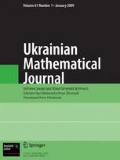A ring R is called clean (resp., uniquely clean) if every element is (uniquely represented as) the sum of an idempotent and a unit. A ring R is called strongly P-clean if every its element can be represented as the sum of an idempotent and a strongly nilpotent element, which are commuting. The class of strongly P-clean rings is a subclass of classes of semi-Boolean and strongly nil clean rings. A ring R is called semi-Boolean if R/J(R) is Boolean and idempotents are lifted modulo J(R), where J(R) denotes the Jacobson radical of R. The class of semi-Boolean rings lies strictly between the classes of uniquely clean and clean rings. We obtain a complete characterization of strongly P-clean group rings. It is proved that the group ring RG is strongly P-clean if and only if R is strongly P-clean and G is a locally finite 2-group. Further, we also study semi-Boolean group rings. It is proved that if a group ring RG is semi- Boolean, then R is a semi-Boolean ring and G is a 2-group and that the converse assertion is true if G is either a locally finite soluble group or an FC group.
Similar content being viewed by others
References
H. Chen, H. Kӧse, and Y. Kurtulmaz, “Strongly P-clean rings and matrices,” Int. Electron. J. Algebra, 15, 116–131 (2014).
J. Chen, W. K. Nicholson, and Y. Zhou, “Group rings in which every element is uniquely the sum of a unit and an idempotent,” J. Algebra, 306, 453–460 (2006).
I. G. Connell, “On the group ring,” Canad. J. Math., 15, 650–685 (1963).
A. J. Diesl, “Nil clean rings,” J. Algebra, 383, 197–211 (2013).
T. Koşan, Z. Wang, and Y. Zhou, “Nil-clean and strongly nil-clean rings,” J. Pure Appl. Algebra, 220, No. 2, 633–646 (2016).
T. Y. Lam and A. First, Course in Noncommutative Rings, 2nd edn., Springer-Verlag, New York (2001).
W. W. McGovern, S. Raja, and A. Sharp, “Commutative nil clean group rings,” J. Algebra Appl., 14, No. 6, 1550094 (2015).
W. K. Nicholson, “Local group rings,” Canad. Math. Bull., 15, No. 1, 137–138 (1972).
W. K. Nicholson, “Lifting idempotent and exchange rings,” Trans. Amer. Math. Soc., 229, 269–278 (1977).
W. K. Nicholson and Y. Zhou, “Rings in which elements are uniquely the sum of an idempotent and a unit,” Glasgow Math. J., 46, 227–236 (2004).
W. K. Nicholson and Y. Zhou, “Clean general rings,” J. Algebra, 291, 297–311 (2005).
D. S. Passman, The Algebraic Structure of Group Rings, Wiley, New York (1977).
Z. Wang and J. L. Chen, “2-Clean rings,” Canad. Math. Bull., 52, No. 1, 145–153 (2009).
Y. Zhou, “On clean group rings,” in: Adv. Ring Theory, Trends Math., Birkhäuser, Basel (2010), pp. 335–345.
Author information
Authors and Affiliations
Corresponding authors
Additional information
Published in Ukrains’kyi Matematychnyi Zhurnal, Vol. 71, No. 12, pp. 1717–1722, December, 2019.
Rights and permissions
About this article
Cite this article
Udar, D., Sharma, R.K. & Srivastava, J.B. Strongly P-Clean and Semi-Boolean Group Rings. Ukr Math J 71, 1965–1971 (2020). https://doi.org/10.1007/s11253-020-01759-0
Received:
Published:
Issue Date:
DOI: https://doi.org/10.1007/s11253-020-01759-0


